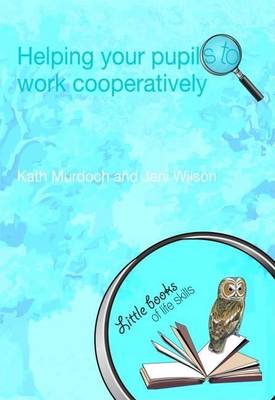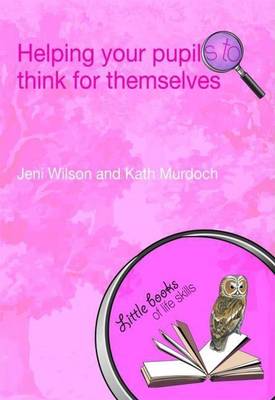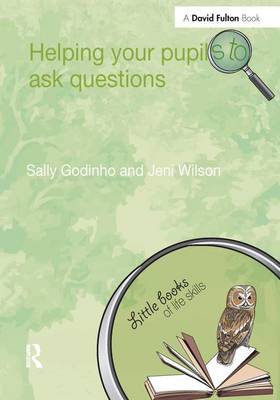Little books of life skills
3 total works
Helping Your Pupils to Work Cooperatively
by Kath Murdoch and Jeni Wilson
The classroom is one of the few places where pupils are regularly required to share, wait, take turns, compromise and work in pairs or groups. And when they are involved in the same project or task, not only are they expected to get along with others, but to get along well - well enough to communicate effectively and work together towards a shared goal or group product.
It can be a challenging way to work for some pupils, but when it is done well, it can be very rewarding. When people are working together effectively, they are aware of each person's roles and responsibilities, feel valued and respected, use a range of skills and strategies and understand the various processes and protocols required. And once the goal is reached, there is the opportunity to celebrate and share the accomplishment.
Helping your pupils to work cooperatively clearly sets out the features of cooperative working and explains how it can enhance the many skills needed for effective social interaction, healthy relationships and active citizenship. Focusing on how the teacher's role is critical to the success of cooperative working, this book shows teachers how they can develop a repertoire of strategies to help their pupils work cooperatively. Explicit instruction, modelling, feedback, intervention and strategic task selection are all described in detail and supported by examples.
The book also suggests ways to organise the classroom, provides teaching strategies and pupil activities and gives notes on assessment and record-keeping. It is complemented by several pages of proformas, which can be copied or amended for use in the classroom.
Helping Your Pupils to Think for Themselves
by Jeni Wilson and Kath Murdoch
Possibly the biggest challenge teachers face in the classroom is getting their pupils to think for themselves. When children learn to think independently, they are able to take control of their own learning. What's more, they become good at dealing with the many problems that life will inevitably throw their way - not only good at solving these problems, but at choosing the kind of thinking strategies that will help solve them.
Helping your pupils to think for themselves defines the various types of thinking (critical, creative, reflective) and discusses in detail the most crucial type of thinking for student progress - metacognition, which invoves self-assessment, active decision making and personal goal setting. Focusing on how to choose and use a particular type of thinking or strategy for a particular purpose, this book shows teachers how they can do a audit of their pupils' thinking skills and identify their pupils' thinking preferences and dispositions, to foster a thinking culture in their classrooms and ensure that all their pupils become skilled and independent thinkers.
This book suggests ways to organise the classroom, provides teaching strategies and pupil activities and gives notes on assessment and record-keeping. It is complemented by several pages of proformas, which can be copied or amended for use in the classroom.
Who? What? When? Where? Why? How? Asking questions has always been fundamental to making sense of the world. Unless we are able to critically question what we see, hear and read, we can't solve problems, create solutions, make informed decisions or enact change. And in our information-laden age, it is more important than ever to be able to decide what's relevant, legitimate and valuable.
Helping your pupils to ask questions describes in-detail how questions can generate various levels of cognition, from remembering, understanding and applying to analysing, creating and evaluating. Focusing on the many different kinds of questions and ways that teachers themselves can model good questioning, this book shows teachers how they can help their pupils develop questioning skills through encouragement and a wide variety of targeted approaches.
The book also suggests ways to set up a question-friendly classroom, provides teaching strategies and pupil activities and gives notes on assessment and record-keeping. It is complemented by several pages of proformas, which can be copied or amended for use in the classroom.


